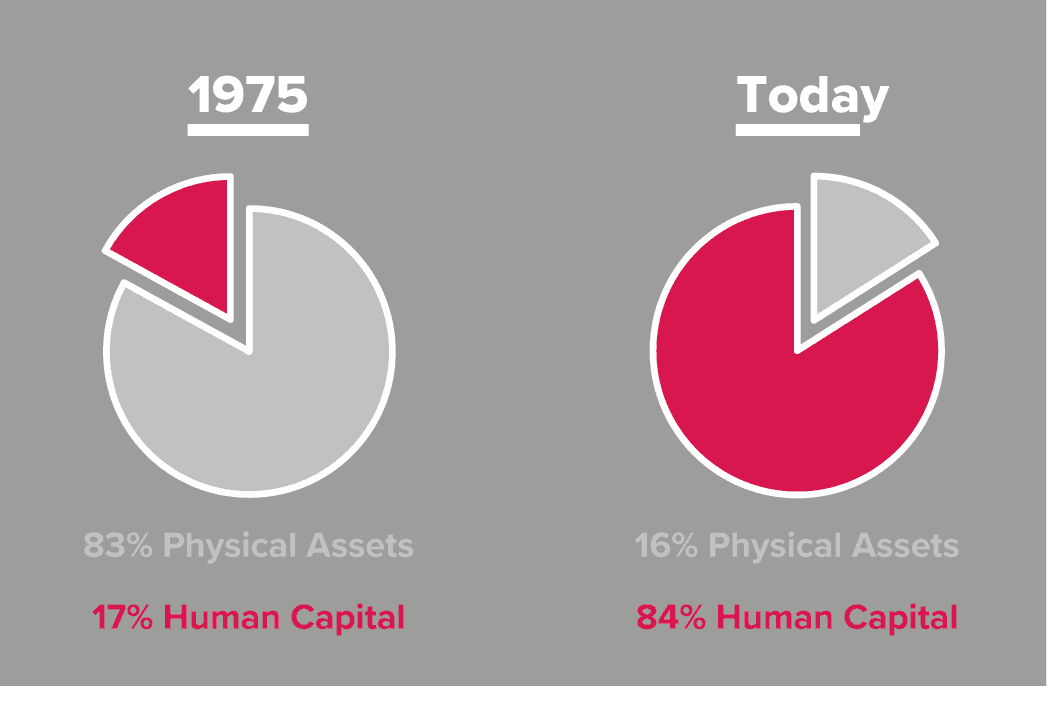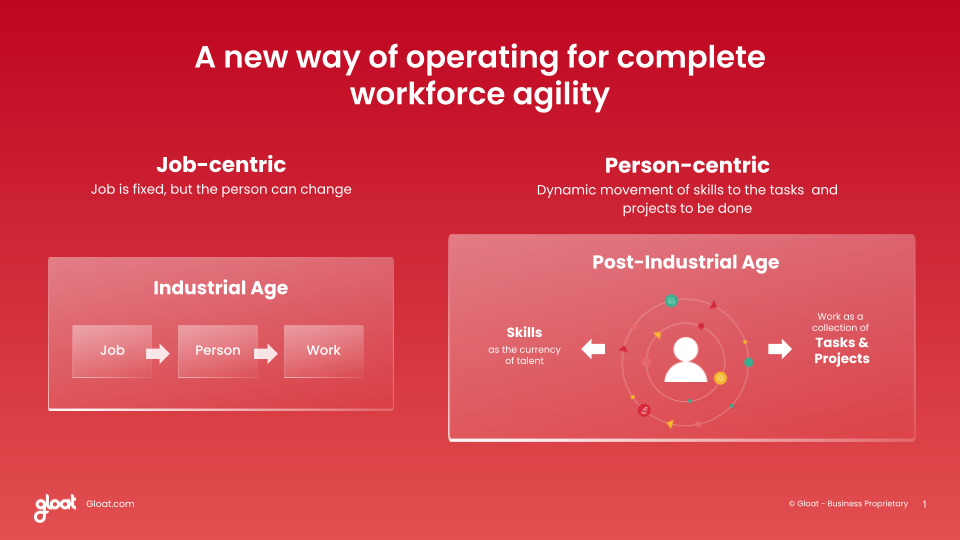Seagate’s Divkiran Kathuria on D&I and the talent marketplace
Catching up with Seagate’s Director of Talent Mobility to discuss talent marketplaces and D&I

Today, leaders rank diversity and inclusion as one of their highest priorities. In fact, 43% of CEOs report that building diverse, equitable, and inclusive workplaces is among their top challenges for 2022. Yet, there’s still a lot of uncertainty about what it takes to launch initiatives that drive lasting change.
Fortunately, the rise of talent marketplaces is revolutionizing D&I strategies. The two-sided platforms get to the heart of the problem by democratizing access to career development opportunities, mitigating bias, and empowering leaders to see their people for their potential.
Although the technology is relatively new, pioneering organizations like Seagate are already seeing promising results when it comes to leveling the playing field. We caught up with their Director of Talent Mobility, Divikiran Kathuria, to learn more about how Seagate is harnessing its talent marketplace to take D&I efforts to the next level.
Let’s start with a little background information. Your career has been packed with HR innovation, and it gives you a unique perspective on the shape of things to come. What have you been up to in recent years, and what are you doing now?
Divkiran Kathuria: I have been in HR technology and HR transformation programs for more than 15 years now and how technology can support Diversity and Inclusion and vice versa has always fascinated me.
Interestingly though. I didn’t start in an HR function. I started with coding, mainly Java, PL/SQL. I didn’t even know what Human Resource function is and does back then!
One of my assignments included working on a quarterly performance evaluation system and that’s how started learning more about the HR domain.
And post that, thanks to the wonderful opportunities my consulting career came with, I was able to see how HR technology, if done right, can positively impact so many employees’ lives.
HR has now become a passion, and I’m especially interested in emerging HR technologies and how they can strategically support both employee and business growth—talent marketplaces being one of the most important HR tech innovations in the last few years.
For any organization, D&I is not a choice anymore. It needs to be a part of every organization’s DNA. And this is where the talent marketplace can be a game changer.
What about D&I challenges specifically? How can talent marketplaces help address those challenges?
DK: Well if you want to talk about the benefits of D&I, I think there is no end to it. There are many examples of products that were designed without a diverse team and hence failed to address the needs of other customer segments.
The first-ever car airbags and seatbelts were built to protect taller, heavier passengers due to which women and children were at a huge risk. While airbags became mandatory in some countries in the 90s itself, it was only after 20 years they were properly tested with female statue dummies.
Another example is facial recognition technology. Even the top-performing facial recognition systems misidentify darker-skinned individuals at rates five to 10 times higher than they do white skin.
In both these examples, the products could have benefitted from engaging a more diverse background right from requirements to design; before you go to market and face serious implications.
And so – for any organization, D&I is not a choice anymore. It needs to be a part of every organization’s DNA. And this is where the talent marketplace can be a game-changer.
First and foremost, anyone using a talent marketplace will be immediately able to discover hidden talent – candidates and skills they didn’t know existed. And they’ll be able to experience how diverse, valuable, and capable these discovered candidates are.
I can tell you from my personal experience that when I opened a project for the first time on a talent marketplace, I ended up having a team from across the globe that helped me bring in local context to our internal communications plan. None of us were from a primarily English-speaking country and despite that, we worked beautifully together. And I could have never thought of those cultural and local nuances alone.
You can open doors for a more inclusive environment within the company, simply by using the Talent Marketplace for a short-term project.
On the other hand, if I talk purely about the technical aspect, talent marketplace technology now provides you with an option, to completely hide the identity of the candidate. You don’t see the picture, you don’t see the name, you don’t see the nationality, race, religion, anything – you just see the skills and experiences and that’s what really matters. Any unconscious human bias in this situation will not get a chance to surface as the bias-forming attributes are not visible at all
Is there anything that surprised you about the talent marketplace from a D&I perspective?
DK: Quite a few things actually! From the way the talent marketplace changes how you look at a candidate, to the way it can help organizations detect and mitigate bias.
On the design and implementation side, it is revolutionizing how we discover and view the right talent by hiding the bias-forming parameters and highlighting employees’ skills.
And the cherry on the cake—the talent marketplace also takes into consideration the changing skill requirements in the industry along with your aspirations and interests. I was pleasantly surprised when I saw it in action for the first time!
Another aspect where the talent marketplace helped change perspectives is the “closeness bias” or geographical bias. During COVID, most companies had to redistribute and redeploy talent from one part of the organization to another to meet the changing market demands— both temporarily and permanently. The struggle to find the right fit was so much greater. If you are an organization of anywhere over a thousand employees, it is almost impossible to know everyone’s skills and interests without technology, especially if you’re a global company with employees spread across geographies. Talent marketplaces truly helped achieve the goal of “talent without borders” during this pandemic as it surfaced the right talent no matter where they are located, in turn helping move the manager’s mindset from “presence” to “productivity”.
What about bias creep? How have you dealt with that in your implementations?
DK: Most human beings tend to be afraid of what they are not aware of and AI in talent marketplaces is one of those technologies. In the case of talent marketplaces – AI is neither deciding nor taking an action on your behalf. Instead of “Artificial Intelligence” – I would rather call it “Augmented Intelligence” as it is helping you take the decision by surfacing unbiased options when you launch it afresh.
At both Seagate and Schneider, we chose to reduce the possibility of bias creep by design. While setting up the system we simply eliminated employee information attributes like gender, race, age, ethnicity, nationality, etc. from the talent marketplace data. Some other organizations I know of have chosen to keep the name and pictures out as well!
The second important aspect, which I really like about Gloat and a few other similar products in the market, is that there is a bias detection mechanism built in to mitigate bias creep (if any). Unlike human actions, it’s easier to track and identify bias in AI applications, introduce noise, and reset it.
Machine learning is more objective and learns faster compared to human learning. To detect and then eliminate the bias from humans is nearly impossible. It takes an enormous amount of research and training efforts by D&I professionals across organizations.
To truly manifest that right talent at the right place, and to have the whole world as your talent pool, it’s critical to shed our biases. And without augmented intelligence supporting us, it can be slow and painful.
If you’re looking for more insights from Divkiran Kathuria, check out Seagate’s customer story, which explores the game-changing results that the leading enterprise reaped by launching its talent marketplace.




